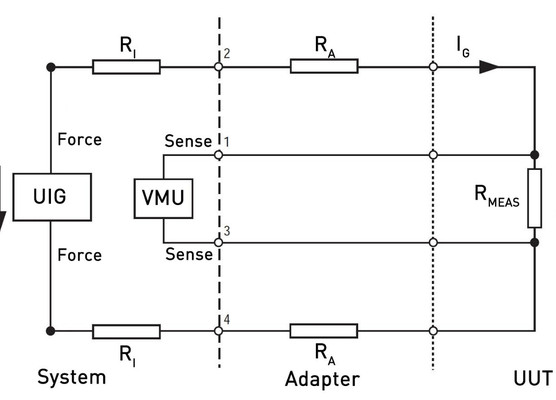The four-terminal measurement is also known as 4-wire sensing, 4-point probes method or Kelvin sensing.
It is a method for accurate measuring of resistances in the unit under test (UUT). It eliminates internal transition resistances and resistivities in the adaption.
For each measurement point in the UUT, two juxtaposed test points in the switching matrix are needed. They are connected to the UUT with sense and force wires via the adaption. The four-terminal measurement is activated through the respective identification marking of the pins in the pin table.
During the four-terminal measurement, the generator delivers a constant current. The voltage drop across the resistor (RMEAS) is measured by a high impedance voltage measurement unit (VMU—see measurement units). Thus not only meeting the threshold value is measurable, but also the resistance can be measured accurately down to the milli-ohm range.
